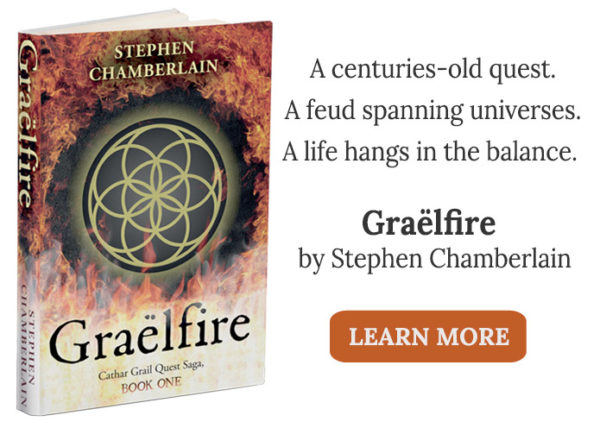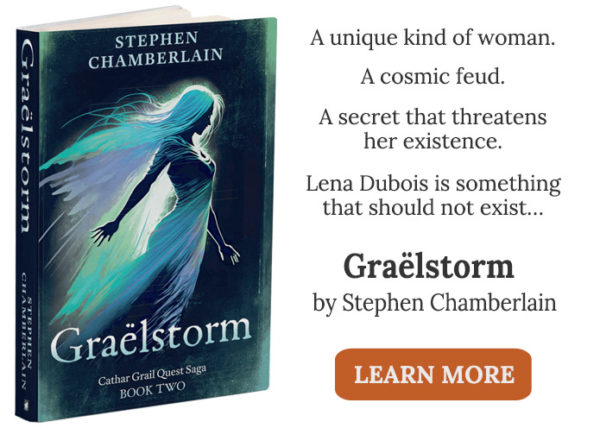The Alchemy of Imagination, Creativity, and Technique
“Creativity is putting your imagination to work.” – Sir Ken Robinson
Storytelling comes to us in so many ways. Through novels and games to the stage and the screen, writers entertain us with their imagination, creativity, and mastery of technique. Although creativity is used broadly to mean making things, we shouldn’t confuse it with imagination and technical skill. Each plays a part in crafting a great story.
Imagination: The Visionary Flare
A writer’s journey begins with a burst of inspiration that lights up their imagination and plants the seed of an idea. For me, that spark came one February morning as I climbed through vineyards near my alpine home. A buzzard’s cry pierced the stillness, and my eyes darted up to the granite peaks. Bastions of rock seemed to close ranks from all sides, and I couldn’t shake the feeling of a fortress rising, vast and timeless. Then it hit me: this place needed a myth befitting its grandeur, and what legend could be better than the Holy Grail?
Inspiration comes from things around us, like nature, people, experiences, and events. But imagination is something that happens inside our heads—a vision that conjures up ideas for a story, complete with characters, settings, and scenarios. Tolkien’s The Lord of the Rings set the benchmark. From the Shire to Mordor, Tolkien dreamt up an intricate world with all kinds of creatures, cultures, languages, and backstories. Then there’s Frank Herbert’s Dune, a rich universe filled with interstellar intrigue, religious mysticism, and exotic features such as giant sandworms, the coveted spice melange, and nuns who can command minds with a single word. In my case, I imagined the Holy Grail as a channel for some primordial cosmic force connecting all universes, and I pictured it lying at the feet of those impregnable slopes, protected within a subterranean chamber. If you want to learn more about the world I made up for this story, check out the reference guide on my website.
Creativity: Putting Imagination to Work
Not every thought leads to tangible ideas, and if an overactive imagination runs wild without focus, it becomes a distraction. Being creative means turning a vision into something concrete. A skilled storyteller knows how to take their ideas and weave them into an exciting plot using intense scenes filled with tension and conflict. Patrick Rothfuss’s The Name of the Wind is a prime example, with its epic battles, unexpected plot twists, and run-ins with dangerous creatures. Philip Pullman’s trilogy, His Dark Materials, is another, where souls are animal companions called deamons; althiometers are used for divination; and the world is filled with witches and armoured bears. This series explores some complex themes like authority, religion, and the nature of consciousness, all wrapped up in a quest to understand a mysterious substance called Dust.
I started my Cathar Grail Quest Saga with two intertwining storylines: one set in the present day and another in medieval times. They revolve around a quest for a powerful relic—the Holy Grail, but not as we know it. As the present-day quest advances along Lake Geneva, sinister forces stalk the seekers. Then I transport us back to 1245, a time of terror in Languedoc, where an otherworldly seeker is on the trail of the fabled lost treasure of the Cathars. Pursued by the Inquisition, he flees across pilgrim routes to Italy, where his journey ends in star-crossed love, tragedy, and a fateful encounter. When these two timelines collide, the characters end up embroiled in a cosmic vendetta, where malevolent forces eight hundred years in the making propel them to a deadly showdown. This is a fantasy adventure full of intrigue, tyranny, and the lust for revenge.
Technique: Turning Ideas into Manuscript
Imagination and plotting are not enough to make a great story. Fashion designers and chefs need technical know-how to turn their sketches and recipes into appealing products. Writing a well-crafted story is no different. All the creative ideas in the world won’t amount to much if they are not executed and communicated well. This means mastering techniques like putting together sentences, using grammar correctly, keeping a good pace, setting the right tone, choosing a point of view that works, and other style techniques that transform abstract concepts into a polished story. Guy Gavriel Kay is known for his amazing fantasy worlds based on real historical settings. His writing is refined and striking… just look at The Fionvar Tapestry, Tigana and The Lions of Al-Rassan. The prose is lyrical but not flowery, clear but elegant. It has a style and texture uniquely his own.
Creative writing isn’t easy. It takes dedication and perseverance to master the craft. Even natural talent needs coaching. I was born with a vivid imagination and read every book I could get my hands on, but it took me years to learn enough skills to put my first novel together. The fundamentals can be learned through textbooks and classes, while reading fiction can help with absorbing elements like style, sentence structure, rhythm, and vocabulary. However, the only way to improve writing skills is by putting pen to paper and then getting feedback from others: mentors, beta readers, and editors—people who know what they’re talking about. Good writing takes time. It’s a process of trial and error. You have to write, read, revise, and repeat until your manuscript is as polished as you can possibly make it. It’s important to understand that editors highlight problems rather than solving them, and so having others critique my work pushed me to improve my grammar and word choice, as well as my grasp of structure, scene development, dialogue construction, and emotional impact. It taught me other things too, such as the importance of internal dialogue, how every action has a cause and effect, how controlling the pace and building tension keeps readers turning the pages, and how engaging all the senses creates a more immersive and graphic experience for them. Ultimately, writers are judged by the quality of their writing. That’s what brings their visions to life and leaves a lasting impact on their readers.



